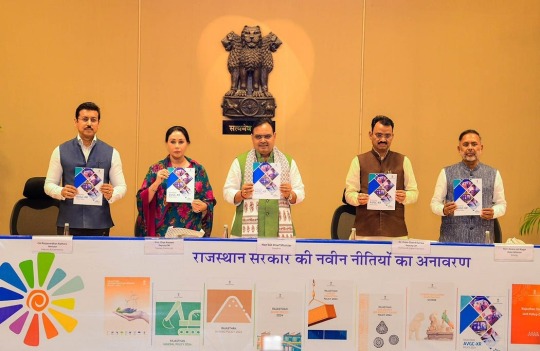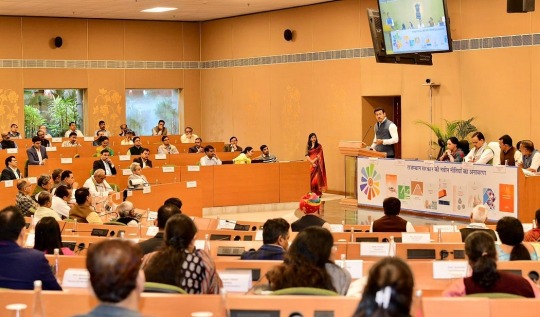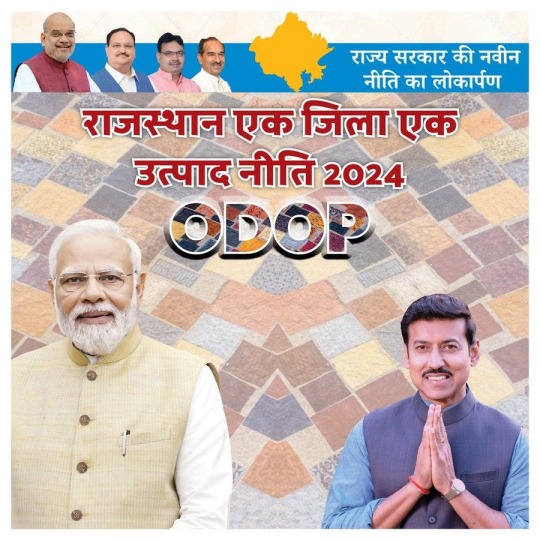#Empowerment & Equality Products
Explore tagged Tumblr posts
Text
youtube
Awesome ad from Always breaking gender stereotypes! A female is driving a car and needs to pull over to change her pad. Unfortunately, her car breaks down. A bunch of men run over to help but aren't very helpful and argue. Always Ultra protection gives the lady the confidence to take matters in her own hands and she fixes the car by herself faster than 6 men. The men are shocked but the lady smiles and is full of confidence.
#girl power#always ultra#menstruation#sanitarynapkin#sanitary pads#female empowerment#female supermacy#gender equality#women vs men#battle of the sexes#periods#period problems#period products#vw#vw golf#volkswagen#fixing cars#menstrual cycle#confident woman#smart woman#girls rule#independent woman#Youtube
4 notes
·
View notes
Text
Eunice Auma's Journey: Leading the Charge for Women in Fish Farming in Homa Bay County
Discover how women in Homa Bay County are transforming the fishing industry through cage fish farming, breaking free from the traditional “jaboya” practice and leading Kenya’s blue economy revolution. Learn about the inspiring journey of women in Gwassi Ward, Homa Bay, as they rise to become fish farmers and entrepreneurs, driving economic empowerment through sustainable cage fish farming on Lake…
#aquaculture#aquaculture practices#blue economy#cage fish farming#community development#economic independence#economic transformation#financial inclusion#fish farming initiative#fish farming success#fish farming training#fish market access#fish production#Food security#gender equality#Homa Bay County#investment in women#jaboya#Lake Victoria#local fish trade#Rasira Women Group#skill development#sustainable fisheries#sustainable livelihoods#women empowerment#women entrepreneurs#women in agriculture#Women in Fish Farming#women-led projects#women&039;s coalitions
0 notes
Text
"Stylish Black Lives Matter Butterflies and Flowers Apparel for Every Occasion"
Black Lives Matter Butterflies and Flowers is a powerful artistic concept that blends symbols of social justice with natural beauty. This imagery combines the Black Lives Matter movement's message of equality and racial justice with the delicate grace of butterflies and the vibrant allure of flowers.

Buy now:19.95$
The concept likely features black butterflies, symbolizing transformation and resilience, alongside a variety of colorful flowers. These elements create a visual metaphor for the diversity, growth, and potential for positive change within the Black community and society at large.
The butterflies may be depicted in flight, representing freedom, progress, and the ongoing journey towards equality. Their wings could incorporate patterns or symbols associated with Black culture and heritage, further emphasizing the movement's roots and aspirations.

Buy now
Flowers in this context might include species native to Africa or those with historical significance to Black communities. These could be arranged in patterns reminiscent of African textiles or art, adding layers of cultural meaning to the overall design.
The juxtaposition of the stark "Black Lives Matter" slogan with the soft, organic forms of butterflies and flowers creates a striking visual contrast. This combination serves to soften the often confrontational nature of protest imagery while maintaining its core message of dignity, respect, and the sanctity of Black lives.
This artistic concept can be applied to various mediums, from digital art and murals to fabric designs and jewelry. It offers a way to express solidarity with the Black Lives Matter movement through a more approachable, nature-inspired aesthetic that appeals to a wide audience.

Buy now
Butterfly Gifts for Women encompass a charming array of items inspired by these delicate, beautiful creatures. These gifts appeal to women who appreciate nature's elegance and symbolism. Options range from jewelry like necklaces, earrings, and bracelets adorned with butterfly motifs, to home decor items such as wall art, garden ornaments, and decorative pillows.
Practical gifts with butterfly themes include handbags, scarves, and stationery sets. For the fashion-conscious, butterfly-print dresses or tops make stylish choices. Gardening enthusiasts might enjoy butterfly-attracting plant kits or decorative butterfly houses.
Many of these gifts carry deeper meanings, as butterflies often symbolize transformation, hope, and new beginnings. This makes them particularly thoughtful for occasions like graduations, career changes, or personal milestones.

Buy now
Whether delicate and subtle or bold and colorful, butterfly gifts offer a wide range of choices to suit various tastes and preferences.
#Butterfly Gifts For Women#Elegant Butterfly Jewelry#Nature-Inspired Accessories#Charming Butterfly Decor#Unique Gifts for Her#Beautiful Butterfly Themed Presents#Black Lives Matter Butterflies And Flowers#Racial Justice Support#Equality and Empowerment Art#Social Justice Merchandise#Diversity Awareness#Beautiful Advocacy Designs"#View all AUTISM GIFTS products: https://zizzlez.com/trending-topics/hobbies/autism-spectrum-awareness-month/#All products of the store: https://zizzlez.com/
1 note
·
View note
Text
You know what's so devastating to me about "God that I were a man"? It's the way that in this situation, Beatrice is not exceptional. In the first acts, she appears to be exempt from the gender roles that everyone around her complies with: she has avoided marriage so far, and she has license to playfully criticize and reject being "over-master'd with a piece of valiant dust" (2.2.55-56). She even suggests to Hero that she claim some agency over her engagement: "it is my cousin's duty to make curtsy, and say, 'father, as it please you.' But yet for all that, cousin, let him be a handsome fellow, or else make another curtsy and say, 'father, as it please me'" (2.1.48-51). Beatrice has carved out an existence for herself that everyone else tolerates; her wit allows her to live outside of people's expectations of womanhood.
But Beatrice is not exempt from being a woman. When it actually matters, when Hero is disgraced by powerful men with no regard for her wellbeing or humanity, Beatrice can't do anything about it. And "God that I were a man" is so painful because it reminds us--and Benedick--that no matter how transcendent Beatrice appears to be, she is still constrained by her role in Messina's society. Back in act one and act two, the reason that she was allowed to poke fun at men wasn't that she couldn't be stopped; it was that it didn't matter. She has no actual power to change the order of things, and so her verbal sparring is not a threat.
(An aside: I think that Benedick is taken aback by "God that I were a man" because this has never really occurred to him. He sees Beatrice as his intellectual equal, and he has watched her carve out space for herself effectively (they know each other of old). In the 2011 production with David Tennant, the costuming and acting choices show how Benedick starts actively performing masculinity only when he accepts Beatrice's request to kill Claudio--when he has to "be a man for [Beatrice's] sake" (4.1.314). In the first acts, he wears tight clothes, a crop top, and a miniskirt. From the wedding on, he wears his military uniform and then a suit. His body language also changes; he abandons physical comedy, stands tall, and emotes less when he speaks to Claudio and Don Pedro. He wields his masculinity as a weapon because he now realizes it's a weapon that Beatrice cannot wield herself.)
The crashing realization of Beatrice's limits is so devastating to me because it's so familiar. I can only speak from experiences I've had, but as a queer woman I know that tolerance is different than empowerment. That having grown up evading dating and romance with made-up excuses to hide my queerness, having realized the extent of the misogyny in an organization I cared about and having grappled with how that misogyny prevented me from effecting change, being allowed to exist is not the same as being able to participate, to make things different. God, that I were a man. I would eat his heart in the marketplace.
3K notes
·
View notes
Text
Democracy in the USSR could have been more advanced in 1985 than it actually was, but that is no reason to identify “lack of democracy” as the main cause of the end of the Soviet Union. Many observers have little understanding of the actual features of socialist democracy. If the word “democracy” means the empowerment of working people, then the Soviet Union had democratic features that surpassed any capitalist society. The Soviet state had a greater percentage of workers involved in the Party and government than was the case with parties and governments in capitalist countries. The extent of income equality, the extent of free education, health care and other social services, guarantees of employment, the early retirement age, the lack of inflation, the subsidies for housing, food, and other basics, and so forth, made it obvious that this was a society run in the interests of working people. The epic efforts to build socialist industry and agriculture and defend the country during World War II could not have occurred without active popular participation. Thirty-five million people were involved in the soviets. Soviet trade unions had powers over such things as production goals, dismissals, and their own schools and vacation resorts that few, if any, trade unions in capitalist countries could claim. Unless there is enormous pressure from below, capitalist states never challenge corporate property. Advocates of the superiority of Western democracy ignore class exploitation, focus on process not substance, and give credit for capitalist democracy to capital, not its real defender and promoter, the modern working class. They compare capitalist democracy's achievements to its past, but, asymmetrically, compare socialist democracy's achievements to an imagined ideal.
-Socialism Betrayed: Behind The Collapse Of The Soviet Union by Roger Keeran and Thomas Kenny, page.235
(Link to the PDF included in the hyperlink)
307 notes
·
View notes
Text
(article from sept '22)
[Jasbir K. Puar] further distinguishes between disability and debility: disability might be a political-relational identity, while debility is a process. One is debilitated by repeated exposure to harm and violence – a wearing-down of the body and mind throughout one’s life. This could look like the mercury accumulating in the bodies of Indigenous peoples whose water source has been polluted, or panic attacks due to daily encounters with racism in education, health care, and justice systems. What this tells us, Puar says, is that “it can be productive for the settler colonial state to keep some populations alive but in a space of continual, perpetual injury.” And the scale of debility is enormous: in 2016, the World Health Organization estimated that as part of the Syrian war, 30,000 Syrians were being injured each month.
“Disability,” Puar continues, “becomes the [way] institutions exceptionalize injury or the non-capacitation of a body.” This means that institutions view disability as something out of the ordinary instead of the inevitable outcome of living under oppressive conditions, and they place onus on the individual for being disabled, rather than on these oppressive systems for disabling the individual.
Though a minority of disabled people live in the Global North – the wealthy, imperialist countries like the United States, Canada, and those in Western Europe – Puar notes that Global North disability rights advocacy tends to focus on disabled people attaining equality more than halting and holding accountable the systems that produce disability throughout the rest of the world. She writes that disability rights advocacy asserts “that disability should be reclaimed as a valuable difference […] through rights, visibility, and empowerment discourses […] rather than addressing how much debilitation is caused by global injustices and the war machines of colonialism, occupation, and U.S. imperialism.”
In other words, Global North disability rights appeal to the state to protect mostly white and wealthy disabled people. But Puar reminds us that disability and disablement can be a purposeful goal of the state. In contrast, a disability justice framework helps us understand that the safety of some disabled people in the Global North must not come at the expense or production of disabled people in the Global South. Disability justice, a movement founded by racialized people, explicitly denounces imperialism and recognizes that, in the words of disability justice collective Sins Invalid, “Disabled people of the global majority – Black and brown people – share common ground confronting and subverting colonial powers in our struggle for life and justice.”
#the article does talk of palestine and mass disabling by israel hence why i found it topical#there was too much to quote#disability justice#palestine#m
173 notes
·
View notes
Text
You know what I would actually love to see? Productive liberal feminism. Because I have friends that I would call genuine liberal feminists, and I don’t think mainstream liberal feminism is at all what it should be.
In theory, right, if liberal feminism is feminist action through law, policy and regulation through existing institutions, it could do good things. Theorising about a feminist revolution and a perfect world, talk of culture and separatism is great and all, but we need to fix the world we currently live in so it’s friendlier to women as well, and i believe that’s what liberal feminism should be. There’s things to improve upon through law in the western world, but moreover there’s countless of things to fix and change in other countries to help women. I do honestly believe this kind of feminism is equal or even more important than radical/cultural feminism. I’ve considered shifting my own focus to things like this, considering I’m studying law and crime anyways.
A productive liberal feminism movement could help illegalize FGM worldwide, remove mandatory hijab or covering laws, have harsher punishments for offenders in honour killings. It could get more women into parliament, force law enforcement to take sexual crimes and hate crimes against women more seriously. It has done good in past, no doubt: such as laws surrounding what questions can be asked to the victim in sexual assault or rape cases, and what personal information of the victim the jury can be provided with.
But unfortunately, reality is that historically, liberal feminism has been extremely individualistic, and focused only on upper-class white women (See: Betty Friedan in the 1960s telling women that the solution to their problems (emotionally) is to get a job and get out of the house - whilst most working-class and WOC already had a job, or were working too much from home to consider a job. She came to this conclusion because she only talked to and researched upper-class white women)
Gail Dines often says liberal feminism operates on a basis of “If i’m happy then fuck you”. The fact alone that liberal feminism nowadays focuses on “Empowerment” rather than looking at the genuine struggles that even lower class women in their own countries face, let alone struggles and liberation of women in other parts of the world is telling of its intentions and individualistic view. Honestly i feel like liberal feminism should be a separate term, and this “empowerment” “feminism” should be called something else - and not be called feminism. I believe much of the “empowerment” movement is regressive and anti-feminist. In a sense, it’s even conservative, the way it wants nothing to change functionally, only to maintain current culture and systems, except without any criticism.
TLDR it’s an honest to god shame that liberal feminism is such a mess and is so individualistic, and it’s fucking weird when people say “radical feminism is white feminism” when we seem to be the only ones concerned with anyone but upper-class white people who have the privilege to seek “empowerment” rather than liberation from oppression
#sorry for yapping#i love gail dines#radical feminism#radical feminists do interact#radical feminist community#radical feminist safe#terfblr#radical feminist theory#radical feminists do touch#trans exclusionary radical feminist#terfsafe#radblr#radical feminist#radical feminists please interact#radical feminst#radical feminists please touch#liberal feminism
53 notes
·
View notes
Text

Read about African polygamy

Historical Context:
Polygamy in Africa predates colonialism and is intertwined with traditional cultural practices and religious beliefs. In many African societies, polygamy was a symbol of wealth, power, and prestige, as having multiple wives signified a man's ability to provide for and protect his family. Additionally, polygamy served practical purposes such as expanding family labor forces and ensuring lineage continuation.
Polygamy, the practice of having multiple spouses simultaneously, has sparked debates and controversies around the world for centuries. While some argue that polygamy can have positive effects on individuals and communities, others condemn it as harmful and oppressive. In this article, we'll examine both sides of the argument to better understand the complexities of polygamy.
Cultural Significance:
In some African cultures, polygamy is seen as a way to strengthen family ties and social networks. It also plays a role in the distribution of labor and responsibilities within the household, with each wife often having specific duties and roles. Moreover, polygamous marriages are often accompanied by elaborate ceremonies and rituals, reinforcing social cohesion and community bonds.
Contemporary Perspectives:
While polygamy remains legal and socially accepted in many African countries, its practice has evolved in response to modernization, urbanization, and changes in societal norms. In urban areas, economic constraints and shifting gender dynamics have led to a decline in polygamous marriages, as the costs associated with maintaining multiple households become prohibitive. Moreover, women's empowerment movements and changing attitudes towards gender equality have challenged the patriarchal structures that underpin traditional polygamous unions.
Title: Debating Polygamy: Exploring the Pros and Cons of a Controversial Practice
The Case for Polygam

1. Cultural Preservation: For many societies, polygamy is deeply ingrained in cultural traditions and religious beliefs. Advocates argue that prohibiting polygamy infringes upon cultural autonomy and the right to practice one's beliefs freely.
2. Economic Benefits: In agrarian or subsistence-based economies, polygamy can provide economic advantages by expanding the labor force and increasing household productivity. Multiple spouses can contribute to farming, childcare, and other domestic tasks, thereby improving the family's overall welfare.
3. Social Stability: In some contexts, polygamy can foster social cohesion and stability by strengthening family networks and community bonds. Polygamous unions often involve extensive kinship networks, which provide social support and security for members.
4. Gender Empowerment: Contrary to popular perception, some women choose polygamous marriages willingly, viewing them as a means of financial security, social status, or companionship. In certain polygamous arrangements, women may have more autonomy and decision-making power than in monogamous marriages.
1. Gender Inequality: Critics argue that polygamy perpetuates patriarchal power structures and exacerbates gender inequality. In many polygamous societies, women have limited rights and agency, often facing discrimination, abuse, and neglect within the household.

2. Emotional and Psychological Harm: Polygamous marriages can lead to emotional strain, jealousy, and conflicts among spouses. Children in polygamous households may also experience psychological distress due to complex family dynamics and divided parental attention.
3. Legal and Ethical Concerns: Polygamy raises legal and ethical questions regarding marital rights, inheritance, and child custody. In societies where polygamy is practiced without legal regulation, individuals may be vulnerable to exploitation, coercion, and marital instability.

4. Health Risks: Polygamy is associated with higher rates of sexually transmitted infections (STIs) and HIV/AIDS transmission, particularly in contexts where condom use is inconsistent or taboo. Multiple sexual partners increase the risk of disease transmission, posing public health challenges in polygamous communities.
The debate over polygamy is nuanced and contentious, reflecting divergent cultural, ethical, and moral perspectives. While proponents emphasize its cultural significance and potential benefits, opponents highlight the risks of gender inequality, social harm, and health hazards associated with the practice. Ultimately, the question of whether polygamy is "good" or "bad" depends on one's values, beliefs, and the specific context in which it occurs. As societies continue to grapple with issues of gender equality, human rights, and cultural diversity, the conversation around polygamy will undoubtedly evolve.
#blackpoet#black history#polygamy#viralpost#viral trends#life#culture#animals#aesthetic#history#blm blacklivesmatter#anime and manga#architecture#black community
51 notes
·
View notes
Text
Democracy in the USSR could have been more advanced in 1985 than it actually was, but that is no reason to identify “lack of democracy” as the main cause of the end of the Soviet Union. Many observers have little understanding of the actual features of socialist democracy. If the word “democracy” means the empowerment of working people, then the Soviet Union had democratic features that surpassed any capitalist society. The Soviet state had a greater percentage of workers involved in the Party and government than was the case with parties and governments in capitalist countries. The extent of income equality, the extent of free education, health care and other social services, guarantees of employment, the early retirement age, the lack of inflation, the subsidies for housing, food, and other basics, and so forth, made it obvious that this was a society run in the interests of working people. The epic efforts to build socialist industry and agriculture and defend the country during World War II could not have occurred without active popular participation. Thirty-five million people were involved in the soviets. Soviet trade unions had powers over such things as production goals, dismissals, and their own schools and vacation resorts that few, if any, trade unions in capitalist countries could claim. Unless there is enormous pressure from below, capitalist states never challenge corporate property. Advocates of the superiority of Western democracy ignore class exploitation, focus on process not substance, and give credit for capitalist democracy to capital, not its real defender and promoter, the modern working class. They compare capitalist democracy’s achievements to its past, but, asymmetrically, compare socialist democracy’s achievements to an imagined ideal.
Roger Keeran & Thomas Kenny, Socialism Betrayed: Behind the Collapse of the Soviet Union (emphasis mine, citations removed for readability)
10 notes
·
View notes
Text

A.2.10 What will abolishing hierarchy mean and achieve?
The creation of a new society based upon libertarian organisations will have an incalculable effect on everyday life. The empowerment of millions of people will transform society in ways we can only guess at now.
However, many consider these forms of organisation as impractical and doomed to failure. To those who say that such confederal, non-authoritarian organisations would produce confusion and disunity, anarchists maintain that the statist, centralised and hierarchical form of organisation produces indifference instead of involvement, heartlessness instead of solidarity, uniformity instead of unity, and privileged elites instead of equality. More importantly, such organisations destroy individual initiative and crush independent action and critical thinking. (For more on hierarchy, see section B.1 — “Why are anarchists against authority and hierarchy?”).
That libertarian organisation can work and is based upon (and promotes) liberty was demonstrated in the Spanish Anarchist movement. Fenner Brockway, Secretary of the British Independent Labour Party, when visiting Barcelona during the 1936 revolution, noted that “the great solidarity that existed among the Anarchists was due to each individual relying on his [sic] own strength and not depending upon leadership… . The organisations must, to be successful, be combined with free-thinking people; not a mass, but free individuals” [quoted by Rudolf Rocker, Anarcho-syndicalism, p. 67f]
As sufficiently indicated already, hierarchical, centralised structures restrict freedom. As Proudhon noted: “the centralist system is all very well as regards size, simplicity and construction: it lacks but one thing — the individual no longer belongs to himself in such a system, he cannot feel his worth, his life, and no account is taken of him at all.” [quoted by Martin Buber, Paths in Utopia, p. 33]
The effects of hierarchy can be seen all around us. It does not work. Hierarchy and authority exist everywhere, in the workplace, at home, in the street. As Bob Black puts it, ”[i]f you spend most of your waking life taking orders or kissing ass, if you get habituated to hierarchy, you will become passive-aggressive, sado-masochistic, servile and stupefied, and you will carry that load into every aspect of the balance of your life.” [“The Libertarian as Conservative,” The Abolition of Work and other essays, pp. 147–8]
This means that the end of hierarchy will mean a massive transformation in everyday life. It will involve the creation of individual-centred organisations within which all can exercise, and so develop, their abilities to the fullest. By involving themselves and participating in the decisions that affect them, their workplace, their community and society, they can ensure the full development of their individual capacities.
With the free participation of all in social life, we would quickly see the end of inequality and injustice. Rather than people existing to make ends meet and being used to increase the wealth and power of the few as under capitalism, the end of hierarchy would see (to quote Kropotkin) “the well-being of all” and it is “high time for the worker to assert his [or her] right to the common inheritance, and to enter into possession of it.” [The Conquest of Bread, p. 35 and p. 44] For only taking possession of the means of life (workplaces, housing, the land, etc.) can ensure “liberty and justice, for liberty and justice are not decreed but are the result of economic independence. They spring from the fact that the individual is able to live without depending on a master, and to enjoy … the product of his [or her] toil.” [Ricardo Flores Magon, Land and Liberty, p. 62] Therefore liberty requires the abolition of capitalist private property rights in favour of “use rights.” (see section B.3 for more details). Ironically, the “abolition of property will free the people from homelessness and nonpossession.” [Max Baginski, “Without Government,” Anarchy! An Anthology of Emma Goldman’s Mother Earth, p. 11] Thus anarchism promises “both requisites of happiness — liberty and wealth.” In anarchy, “mankind will live in freedom and in comfort.” [Benjamin Tucker, Why I am an Anarchist, p. 135 and p. 136]
Only self-determination and free agreement on every level of society can develop the responsibility, initiative, intellect and solidarity of individuals and society as a whole. Only anarchist organisation allows the vast talent which exists within humanity to be accessed and used, enriching society by the very process of enriching and developing the individual. Only by involving everyone in the process of thinking, planning, co-ordinating and implementing the decisions that affect them can freedom blossom and individuality be fully developed and protected. Anarchy will release the creativity and talent of the mass of people enslaved by hierarchy.
Anarchy will even be of benefit for those who are said to benefit from capitalism and its authority relations. Anarchists “maintain that both rulers and ruled are spoiled by authority; both exploiters and exploited are spoiled by exploitation.” [Peter Kropotkin, Act for Yourselves, p. 83] This is because ”[i]n any hierarchical relationship the dominator as well as the submissive pays his dues. The price paid for the ‘glory of command’ is indeed heavy. Every tyrant resents his duties. He is relegated to drag the dead weight of the dormant creative potential of the submissive all along the road of his hierarchical excursion.” [For Ourselves, The Right to Be Greedy, Thesis 95]
#faq#anarchy faq#revolution#anarchism#daily posts#communism#anti capitalist#anti capitalism#late stage capitalism#organization#grassroots#grass roots#anarchists#libraries#leftism#social issues#economy#economics#climate change#climate crisis#climate#ecology#anarchy works#environmentalism#environment#solarpunk#anti colonialism#mutual aid#cops#police
19 notes
·
View notes
Text
Leading with Purpose: Mahatma Gandhi’s Vision for Change
Mahatma Gandhi, widely appeared because the Father of the Nation in India, became a visionary chief whose concepts and practices have stimulated generations across the globe. His management fashion, rooted in nonviolence (Ahimsa), reality (Satya), and self-reliance (Swadeshi), transcended the limits of time and geography, offering a timeless blueprint for transformative leadership. Gandhi’s vision was no longer pretty much accomplishing independence for India but about fostering a international founded on justice, equality, and compassion. This essay delves into the essence of Gandhi's visionary leadership and the enduring lessons it offers.

Visionary Leadership Mahatma Gandhi
The Foundation of Gandhi’s Visionary Leadership
At the coronary heart of Gandhi's leadership turned into a deep dedication to universal values. His vision changed into formed with the aid of his non-public studies, philosophical research, and an unshakable belief within the strength of the individual to pressure societal exchange. Gandhi's management changed into deeply rooted in standards, which served because the bedrock for his strategies and moves.
1. Nonviolence as a Core Principle
Gandhi’s unwavering notion in nonviolence changed into each a moral and a strategic choice. He saw violence as a damaging pressure that perpetuates cycles of hatred and revenge. Instead, he advocated for Ahimsa, a precept derived from historic Indian philosophy, which emphasizes causing no harm to others in idea, word, or deed. Gandhi carried out this principle to each private behavior and mass movements, demonstrating its transformative capability.
Through nonviolent resistance, Gandhi led some of the most impactful actions of the 20th century, inclusive of the Salt March and the Quit India Movement. These movements showcased the strength of collective movement grounded in peace and morality. By refusing to retaliate with violence, Gandhi now not handiest garnered worldwide sympathy for India’s motive but additionally set a ethical wellknown for oppressed societies global.
2. Truth as a Guiding Light
For Gandhi, reality become synonymous with God. He famously declared, “Truth is God.” This deep reverence for fact permeated his management, making honesty and transparency fundamental to his movements. Gandhi’s dedication to truth, or Satya, became obtrusive in his insistence on self-scrutiny and his capability to confess mistakes. This humility and openness earned him the accept as true with and admire of millions.
3. Self-Reliance and Empowerment
Gandhi’s emphasis on self-reliance, embodied inside the concept of Swadeshi, turned into a cornerstone of his imaginative and prescient for India. He believed that real freedom could most effective be performed whilst individuals and groups have become self-enough. Gandhi’s advocacy for using Khadi (hand-spun cloth) and local industries changed into not simply an financial method however a symbolic act of defiance in opposition to colonial exploitation. By selling self-reliance, he empowered the masses, mainly rural communities, to take rate in their destinies.
Gandhi’s Transformational Movements
Gandhi’s visionary leadership found expression in several landmark movements that transformed India’s socio-political landscape and stimulated comparable struggles international.
1. The Champaran Satyagraha
It become a motion to address the plight of indigo farmers in Bihar, who had been being exploited by British planters. Gandhi’s method became unique: he immersed himself in the farmers’ lives, listened to their grievances, and mobilized them to resist peacefully. This movement set the template for future struggles, emphasizing grassroots involvement and nonviolent resistance.
2. The Salt March
The Salt March of 1930 become one in all Gandhi’s maximum iconic campaigns. It was a protest in opposition to the British monopoly on salt production and taxation. Gandhi’s selection to walk 240 miles to the Arabian Sea, wherein he made salt from seawater, was a masterstroke of symbolic management. The march galvanized the state, drawing interest to the oppressive guidelines of the British and uniting people from numerous backgrounds in a common reason.
3. The Quit India Movement
Launched in 1942, the Quit India Movement changed into a name for instant independence. Gandhi’s clarion call, “Do or Die,” inspired thousands and thousands to upward thrust in opposition to colonial rule. Despite brutal repression, the motion showcased Gandhi’s ability to mobilize the loads and maintain their dedication to nonviolence and perseverance.
Gandhi’s Leadership Traits
Gandhi possessed a completely unique combination of qualities that made him an high-quality leader. His vision became now not limited to political freedom but extended to social reform, economic self-reliance, and religious upliftment. Key trends that defined his leadership encompass:
1. Empathy and Inclusivity
Gandhi’s deep empathy allowed him to connect with people from all walks of lifestyles. He championed the purpose of marginalized groups, together with the Dalits, whom he called “Harijans” (kids of God). His inclusive technique ensured that his moves had been now not confined to any particular institution however resonated with the hundreds.
2. Simplicity and Integrity
Gandhi’s simplicity became a effective declaration towards materialism and excess. He led with the aid of example, living a life of austerity and practising what he preached. This consistency between his words and actions reinforced his credibility as a frontrunner.
3. Visionary Thinking
Gandhi’s potential to ascertain a better future and articulate it in a manner that inspired movement turned into principal to his management. His imaginative and prescient prolonged past India’s independence to a international free from oppression and inequality. He dreamed of a society based totally on Sarvodaya, or the welfare of all.
The Global Influence of Gandhi’s Leadership
Gandhi’s standards of nonviolence and civil disobedience motivated numerous leaders and actions worldwide. Martin Luther King Jr. Adopted Gandhi’s techniques within the American Civil Rights Movement, even as Nelson Mandela drew idea from Gandhi’s struggles in his fight against apartheid in South Africa. Even these days, Gandhi’s teachings serve as a guiding light for activists and leaders seeking non violent answers to warfare.
Lessons from Gandhi’s Leadership
Gandhi’s leadership offers undying instructions which can be as relevant today as they had been at some point of his lifetime:
The Power of Nonviolence: Gandhi proven that nonviolence isn't always a signal of weakness but a amazing tool for accomplishing justice and alternate.
The Importance of Personal Integrity: Gandhi’s alignment of values, phrases, and actions underscores the importance of integrity in leadership.
Grassroots Mobilization: Gandhi’s emphasis on attractive and empowering everyday human beings highlights the value of inclusive leadership.
Resilience in Adversity: Gandhi’s ability to persevere in the face of demanding situations serves as a reminder of the significance of resilience in achieving long-term desires.
Holistic Vision: Gandhi’s management became not restrained to one domain however addressed political, social, economic, and non secular dimensions, offering a holistic approach to leadership.
3 notes
·
View notes
Text
Lonah Anyango's Journey: From Small-Scale Farmer to Western Kenya's Rice Farming Icon
In the lush, verdant fields of Kisumu’s Muhoroni Sub-county, where the horizon blends seamlessly with endless rows of swaying rice plants, a quiet revolution has been growing for four decades. At its heart stands Lonah Anyango Okumu, a 63-year-old farmer whose weathered hands and sun-kissed face tell a story of resilience, innovation, and unwavering determination. Lonah Anyango Okumu at her rice…
#Agricultural Innovation#agricultural transformation Kenya.#commercial rice farming#female farmers Kenya#gender equality in farming#Kenyan rice production#Kisumu agriculture#Kisumu rice farms#Lonah Anyango#Muhoroni Sub-county#rice farming challenges#rice farming in kenya#rice farming techniques#rice yields Kenya#rural women empowerment#SRI farming#success in agriculture#sustainable farming practices#System of Rice Intensification#women farmers Kenya
0 notes
Text
Madam Vice President Kamala Harris: Forging a Path for Women in Politics
Kamala Harris made history in 2021 when she became the first woman, first Black person, and first person of South Asian descent to hold the office of Vice President of the United States. Serving alongside President Joe Biden, Harris has taken on a range of responsibilities and initiatives during her tenure.

Buy now:19.95$
Born in Oakland, California, to immigrant parents from India and Jamaica, Harris's background reflects the diversity of modern America. Her career in public service began as a prosecutor in Alameda County, California, before she was elected as the District Attorney of San Francisco and later as the Attorney General of California.
In 2016, Harris was elected to the United States Senate, representing California. During her time in the Senate, she gained national attention for her sharp questioning during committee hearings and her advocacy for progressive policies. Her performance in the Senate and her presidential campaign in 2019-2020 ultimately led to her selection as Joe Biden's running mate for the 2020 election.
As Vice President, Harris has been tasked with addressing complex issues such as immigration reform, voting rights, and racial equity. Her role has included diplomatic missions, tie-breaking votes in the Senate, and serving as a key advisor to the President.

Buy now
Harris's vice presidency has been marked by both achievements and challenges. While she has broken barriers and inspired many, she has also faced criticism and scrutiny from various political quarters. Her performance and impact continue to be subjects of national discussion as she navigates her historic role in American politics.
The Feminist Inauguration of January 20, 2021, marked a significant milestone in American politics and women's rights. This historic event saw Kamala Harris sworn in as the first female, first Black, and first South Asian Vice President of the United States, shattering long-standing barriers in the nation's highest offices.

Buy now
The inauguration ceremony itself reflected a strong feminist theme, with several women playing prominent roles. Youth poet laureate Amanda Gorman delivered a powerful and inspiring poem, while Lady Gaga and Jennifer Lopez performed stirring renditions of the national anthem and patriotic songs.
The event symbolized progress in gender equality and representation, coming just over 100 years after women gained the right to vote in the U.S. It was seen as a victory for feminist movements and a beacon of hope for future generations of women in leadership.

Buy now
Beyond the ceremony, the Biden-Harris administration emphasized its commitment to gender equality by appointing a record number of women to cabinet positions and other key roles in the government. This "Feminist Inauguration" set the tone for an administration pledging to prioritize issues affecting women and promote greater inclusivity in American politics and society.
#Madam Vice President Kamala Harris 2024 Campaign Merchandise#Vice President Kamala Harris Gear#Kamala Harris for President 2024#Political Apparel & Accessories#Feminist Inauguration 21 Merchandise#Celebrate Feminism#Inauguration 2021 Apparel#Women's Rights Inauguration Gear#Feminist Event 2021#Empowerment & Equality Products#View all AUTISM GIFTS products: https://zizzlez.com/trending-topics/hobbies/autism-spectrum-awareness-month/#All products of the store: https://zizzlez.com/
0 notes
Text
Embrace Your Active Lifestyle with Lara Active: Your Ultimate Guide to Sports Hijab and Islamic Activewear in Dubai

Are you a Muslim woman in Dubai looking to stay active while maintaining your modesty? Lara Active offers a wide range of sports hijabs and Islamic activewear designed specifically for you. Whether you're hitting the gym, going for a run, or practicing yoga, we've got you covered with stylish and comfortable options that prioritize performance and comfort.
Why Choose Lara Active?
At Lara Active, we understand the importance of combining faith with fitness. Our sports hijabs are crafted from lightweight, breathable fabrics that wick away sweat and provide maximum coverage without compromising on style. Whether you prefer a snug fit for intense workouts or a more relaxed style for everyday wear, our collection caters to your unique needs.
Our Product Range
Sports Hijabs: Explore our selection of sports hijabs meticulously designed to cater to your active lifestyle. Our hijabs feature adjustable designs, moisture-wicking materials, and innovative construction techniques that ensure comfort and performance without compromising on style.
Islamic Activewear: Dive into our modest activewear collection, which includes womens long sleeve t-shirts, tees, joggers, training pants, and hoodies. Each piece is crafted with attention to detail, offering flexibility, breathability, and modesty in equal measure. Whether you're at the gym, on a morning jog, or enjoying outdoor activities with family, our activewear provides the perfect balance of comfort and style.
Running Hijab: Introducing our specialized Running Hijab, engineered with lightweight, breathable fabric to enhance your running experience. Designed for optimal performance and comfort, our running hijab stays securely in place mile after mile, allowing you to focus solely on achieving your fitness goals.
Hijab for Gym: Find the perfect hijab for your gym sessions that offers sweat-wicking properties and stays securely in place, so you can focus on your workout without distractions.
Shopping Experience
Shopping with Lara Active is easy and convenient. Browse our online store or visit our showroom in Dubai to see and feel the quality of our products firsthand. Our knowledgeable staff are ready to assist you in finding the right sports hijab or activewear that suits your preferences and activities.
Stay Connected
Follow us on social media and subscribe to our newsletter to stay updated on the latest trends in Islamic activewear and sports hijabs. Join our community of active Muslim women in Dubai who prioritize both fitness and modesty.
Conclusion
At Lara Active, we believe in empowering women to embrace their active lifestyles while upholding their values of modesty and faith. Our sports hijabs and Islamic activewear are more than just clothing—they're a symbol of confidence, empowerment, and self-expression. Whether you're running errands around the city or pushing your limits at the gym, Lara Active is here to support your journey with products that are as functional as they are fashionable. Visit Lara Active today and discover how our exceptional range of sports hijabs and Islamic activewear can elevate your fitness journey in Dubai and beyond.
#islamic sportswear#hijab#sports shop uae#women’s sports hijab dubai#athletic hijab dubai#running hijab#Hijab for gym in Dubai#Sports hijab online shopping uae
7 notes
·
View notes
Note
To be honest, I don't see the issue with Christine becoming a doctor.
The way Star Trek sidelined nurses (and Chapel in general) is definitely problematic, but SNW can treat Christine's current position as a nurse with respect without changing the canon.
SNW Christine seems to be more interested in research than face-to-face patient care and I can see her becoming Doctor of Medicine in the future.
I think a healthy fandom has a variety of opinions and I’m glad you’re expressing yours. 💪
To my mind (and I hope others will chime in, especially if I’ve got this wrong), the main concern about Christine becoming a doctor is that the change is seen as a “promotion,” as if nursing isn’t enough. Meanwhile, nursing is actually its own discipline that works with doctors — and nurses certainly can be researchers.
My guess is that, at the time of The Motion Picture (1979), Christine becoming a doctor was seen as female equality and empowerment. Women were no longer forced to become nurses (or teachers) and could be doctors. I looked it up and, the year after the film came out, only 13.3 percent of doctors in the US were female. By contrast, that same year, 95.9 percent of nurses in the US were female. (source: A Demographic Profile of Doctors and Nurses, and I thought US figures made sense given the US-centric production of the film).
So I think Chapel’s career change (as opposed to promotion) may well have been with good, feminist intentions. And, hopefully, if SNW or other Trek uses that canon, it will be done with respect for nursing as a profession and for Christine as a character. ❤️
#i love asks#on this blog we love and respect christine chapel#christine chapel#star trek strange new worlds#star trek the motion picture#nursing#doctoring#feminism#i’m so glad you speak your mind#anon
46 notes
·
View notes
Text
New Policies of Rajasthan Government Unveiled: Col Rajyavardhan Rathore

Rajasthan, known for its cultural heritage and historic prominence, is making waves with forward-thinking policies designed to usher in a new era of growth and development. Col Rajyavardhan Rathore, a dynamic leader and advocate of progress, has been instrumental in shaping and supporting these initiatives. These policies aim to address critical areas such as economic development, environmental sustainability, social equity, and digital transformation, marking a significant step forward for the state.
A Vision for Progress
The new policies reflect the Rajasthan government’s commitment to fostering innovation, inclusivity, and sustainability. By targeting various sectors, from education and infrastructure to technology and rural development, these initiatives promise a brighter and more prosperous future for all.

Key Policies Unveiled
1. Rajasthan MSME Policy 2024
Micro, Small, and Medium Enterprises (MSMEs) form the backbone of Rajasthan’s economy. This policy aims to:
Provide financial assistance and subsidies to MSMEs.
Simplify regulatory processes to encourage entrepreneurship.
Create employment opportunities, especially in rural areas.

2. One District, One Product (ODOP) Scheme
To boost local businesses and crafts, the ODOP scheme promotes:
Identifying unique products in each district for focused development.
Establishing market linkages and export support.
Providing branding and marketing assistance to artisans and producers.

3. Rajasthan Startup Policy 2024
The state’s focus on fostering innovation is evident through its startup-friendly policies, which include:
Seed funding and incubation support for startups.
Incentives for women-led and rural-based startups.
Establishing innovation hubs across districts.

4. Integrated Cluster Development Scheme
This policy aims to modernize and empower traditional industries by:
Developing common facilities for industrial clusters.
Providing training programs for workers in emerging technologies.
Enhancing infrastructure to attract investments.

5. Rajasthan AVGC-XR Policy 2024
Focusing on the Animation, Visual Effects, Gaming, and Extended Reality (AVGC-XR) sectors, this policy includes:
Setting up AVGC-XR training institutes.
Providing subsidies for software and hardware procurement.
Promoting Rajasthan as a hub for creative industries.

Environmental Sustainability Policies
6. Rajasthan Green Energy Initiative
To combat climate change and boost renewable energy production, the policy emphasizes:
Developing large-scale solar and wind energy projects.
Offering incentives for businesses to adopt green energy solutions.
Encouraging electric vehicle adoption through subsidies.
7. Water Conservation Policy
Addressing water scarcity in Rajasthan, this policy includes:
Promoting rainwater harvesting and groundwater recharge.
Modernizing irrigation systems to improve efficiency.
Encouraging community-driven water conservation efforts.
Social Development Policies
8. Rajasthan Women Empowerment Scheme
Aimed at promoting gender equality, this policy focuses on:
Providing skill training and entrepreneurship opportunities for women.
Ensuring safety and security through improved law enforcement.
Offering financial incentives for girls’ education.
9. Antyodaya Seva Camp Initiative
Launched to mark the successful completion of the BJP government’s first year, this program:
Provides direct access to government schemes and services.
Ensures welfare benefits reach the most marginalized communities.
Organizes awareness drives about social and economic rights.
Education and Digital Transformation
10. Rajasthan DigiSkill Program
To prepare the workforce for a digital future, this program includes:
Training in digital tools, AI, and coding for youth.
Setting up digital labs in schools and colleges.
Offering certifications in high-demand IT skills.
11. Rajasthan Education Excellence Policy
Focused on improving education quality across the state, the policy entails:
Modernizing school infrastructure and integrating digital tools.
Recruiting highly qualified teachers for rural and underserved areas.
Enhancing vocational training opportunities.
Economic Growth and Investment Policies
12. Rising Rajasthan Global Investment Summit
This annual event highlights the government’s commitment to attracting global investments by:
Showcasing Rajasthan’s potential in IT, manufacturing, and tourism.
Facilitating investor-friendly policies and incentives.
Establishing Special Economic Zones (SEZs) for key industries.
13. Rajasthan Export Promotion Policy
Aimed at boosting exports, this policy provides:
Support for exporters through subsidies and infrastructure.
Promotion of Rajasthan’s traditional handicrafts and textiles globally.
Setting up export training centers for budding entrepreneurs.
Col Rajyavardhan Rathore: A Champion of Progress
Col Rajyavardhan Rathore has been a driving force behind these transformative policies. His efforts include:
Advocating for inclusive and sustainable growth.
Encouraging public-private partnerships to enhance infrastructure and investment.
Ensuring that government initiatives are accessible and impactful at the grassroots level.
Impact of the New Policies
Economic Growth
Increased investments in key sectors like IT, renewable energy, and manufacturing.
Growth in MSMEs and startups, creating job opportunities.
Social Development
Enhanced opportunities for women and marginalized communities.
Improved access to education and healthcare.
Sustainability
Progress in renewable energy adoption and water conservation.
Reduced carbon footprint through green energy initiatives.
The Road Ahead
With these policies, Rajasthan is poised to become a leading state in innovation, sustainability, and social equity. The government’s commitment, supported by leaders like Col Rajyavardhan Rathore, ensures that this vision translates into reality. As the state charts its path forward, it sets a benchmark for holistic and inclusive development in India.
2 notes
·
View notes